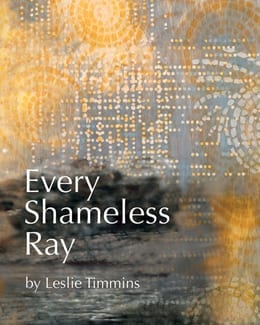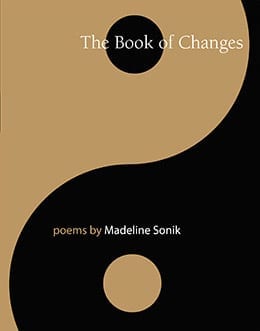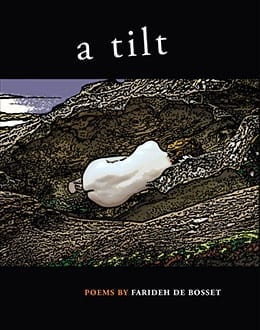“…powerful and evocative…will test the elasticity of readers’ minds and imaginations.” —Ormsby Review
The capacity of the world to signal and illuminate, restore and repair, fuels the poems in Every Shameless Ray. Emotionally acute, intellectually intriguing, and playful in form, these poems rely upon the unreliable, as when a tipped-over kayaker rides a river’s current upside-down and discovers a channel to another world. Misunderstanding a child’s word leads to a glimpse of longed-for innocence, or when assuming love will not be found signals, in the movement of a man’s hands, a love that will last for years when he eases out the under-row of the black seeds of a papaya. Like the shock of seeing a Matisse painting, underestimated by the artist as merely decorative, these encounters “tear the fabric of the world.”
In poems of tenderness and ruthless truth, Every Shameless Ray disrupts personal terror, familial myth, art historical bias, and political madness, offering some unlikely means for living in our unlikely times.
“Whether traversing the fraught terrain of cancer or depicting the ecstatic in Matisse’s canvasses, Leslie Timmins explores the nature of perception, its shifts and shadows, in finely wrought, beautifully crafted poems. This collection shimmers with a radiant engagement with life.”
—Fiona Tinwei Lam, author of Intimate Distances, Enter the Chrysanthemum, and editor of The Bright Well
“If half the pleasure of Leslie Timmins’ poetry comes from discovering surprising new perspectives, as in “The field speaks of its persistence,” much of the rest comes from our sense of her tactile control of texture and language as she ranges from the endearingly domestic through the joyfully sensual to encounters with disease. Not only in her concluding Matisse sequence, but throughout the book, the poet displays a vibrant, painterly awareness of the colours and shapes of the real world that helps us to re-envision the familiar. Hers is an imagination we can trust.”
—Christopher Levenson, author of A tattered coat upon a stick and Night Vision
“Leslie Timmins’ Every Shameless Ray unfolds in three linked movements: “The Calling,” “Echo,” and “A Fine Disorder.” The culminating sequence is a tour de force of ekphrastic reflection on the art and life of Henri Matisse that unifies the various themes of brokenness and regeneration in the volume as a whole. Though her poetic meditation on Matisse’s windows, Timmins opens readers to the French artist’s multi-dimensional planes of space and colour, landing us in the place of the open heart, a “First Supper” of sacramental feminine presence. Enter the world of these poems and be shamelessly transformed.”
—Susan McCaslin, author of Into the Open: Poems New and Selected








Candice James –
Every Shameless Ray by Leslie Timmins
reviewed by Candice James
Canadian Poetry Review – January 28, 2019
https://www.facebook.com/548677701931198/photos/a.647937188671915/1606285056170452/?type=3&theater&__tn__=-UK-R
Leslie Timmins rides a polished slalom ski across a shiny lake of sparkling words that bounce and dance to the rhythm she created and the visuals she paints on the waves she displaces as she shifts through shadows and slices through light, exposing the raw bone of every shameless ray. Timmins is a master of strong and vibrant opening lines that place the reader’s mind in a comfy lazy-boy recliner to envision the cinematic unfolding of her poem(s).
In the poem “Amata” the opening three lines immediately set the stage with a depth of deep sparkle and evocative mind prodding: “When the pack horses carrying you to your gold rush / grow gaunt, buck off their burden, desert you, / even your enemy is lost”
The poem “The Stoning” bypasses all exteriors and speaks directly to the synapses with the picturesque opening lines: “If you enter here / a scarlet sky will ache behind you”
“The Prevailing Wind” is an amazing poem and it opens with a strong first stanza that fervently demands we read on: “An eagle liquid as a manta ray swims / the visible shallows of wind. / the tallest trees shake, branches bounce / and we breathe it in and our ribs unlace,/ our flesh, so easily, wing.”
So many lines coil around my heartstrings and wrap my spirit in warmth as evidenced in these line from the poem “How the Heart Grows Strong Again”: “I know when I’m lost / I should take any road the land offers / from the end of love to whatever comes after”
In the second stanza and the final line of the poem “In the Morning When They Fling the Shutters Wide”, the poem stands tall, taller, tallest: “Canvases lean like corpses against the wall / their bruised fruit stain rags below. / Their silver leaves. Pleasing. Mere vapours now.” And the last line of the poem shouts itself out loudly: “the sun calls out with every shameless ray”
This ekphrastic poem “Seated Woman, Back Turned”, written to the Matisse painting of the same name, is fully included here:
“The cement stoop in the front of the little house / my family lived in awhile / where I sat on summer evenings, 14 years old, / bony knees, chest, face warm,, still being / warmed after the heat of a summer day // all on my own, no one calling or screaming // rooftops and poplars slipped into silhouette, / the rim of the sun caught at the edges of things / as their insides filled with night / and a horizon / I hadn’t really seen before – / just, sort of, abiding – // Matisse made one sky thus: / left-swinging and horizontal, / deliquescent over the silk / and flex of a bay / and the play / of sailboats. // this one window so wide to the outside.”
Many of the poems, ekphrastically married to a myriad of Matisse paintings, open the windows and throw back the curtains to expose the multi-dimensional landscape of Timmins’ exquisite mindset. This book is well worth reading.
Renée Knapp –
#725 Tenebrous and illuminating
Every Shameless Ray by Leslie Timmins
reviewed by P.W. Bridgman
The Ormsby Review – January 18, 2020
https://ormsbyreview.com/2020/01/18/725-bridgman-timmins-every-shameless-ray/
As can be gathered from its enigmatic title, Vancouver poet Leslie Timmins’ first collection, Every Shameless Ray, is much concerned with matters of darkness, shadows and light. Oftentimes these conceits are introduced metaphorically in her poetry; at others they are presented simply in literal ways, allowing the poems fully executed (as opposed to discrete elements within them) to do the metaphorical heavy lifting.
There is much nuance in notions of darkness, shadows and light which may be explored by poets and applied to human situations. Many have traversed this ground before Timmins, and to pleasing effect — not just in poetry but in prose and music as well. Little wonder then that the poems comprising this collection call to mind, inter alia, Joni Mitchell’s musically and lyrically beautiful song, “Shadows and Light:”
Every picture has its shadows
And some source of light
Blindness blindness and sight
The perils of benefactors
The blessings of parasites
Blindness blindness and sight
Threatened by all things
Devil of cruelty
Drawn to all things
Devil of delight
Mythical devil of the ever-present laws
Governing blindness blindness and sight…
Like Mitchell’s, Timmins’ use of lightness and darkness imagery is agile and multivalent. While predominantly a positive force, revealing light is sometimes trained unsettlingly in these poems upon phenomena that, perhaps, might best be left in darkness. (In this way, that revealing light can be “shameless” in the sense apparently meant in the book’s title.) But similarly, while one finds many instances in the poems where references to darkness conjure dread and foreboding, elsewhere Timmins’ recourse to shadows brings to the mind’s eye a restful kind of comfort. This ability to manoeuvre between conflicting significations for the imagery she chooses in her work attests to the depth and breadth of her poetic gifts.
Timmins’ poem entitled “In the Morning When They Fling the Shutters Wide” exuberantly and simultaneously celebrates notions of darkness and light alongside evocations of rich and vibrant colour. In it we find Henri Matisse’s wife and daughter coming upon some paintings of the great master that they consider beneath his talent:
the cobalt sky, the roofs’ green rapture rushes
the unshielded room.
Canvasses lean like corpses against the wall,
their bruised fruit stain rags below.
Their silvery leaves. Pleasing. Mere vapours now.
Amélie Matisse and nine-year-old Marguerite
had agreed: he hadn’t got to joy…
They thereupon take matters into their own hands. Shockingly:
That night,
all night,
they washed and scraped until
all that remained
was canvas white.
Plainly, for Timmins (as for the females in the Matisse household), seeking to replicate in visual art, and in words, the riotous beauty of the natural and man-made worlds, with all their vivid colour and chiaroscuro, is a serious and occasionally fraught undertaking.
It should also be said that this poet takes great pleasure and delight in the wonders of the primarily visual world other than those sourced in the effects of light. Her highly developed powers of evocative description are well displayed in, for example, the following portrayal of killer whales breaching successively in Trincomali Channel (between Salt Spring and Galiano Islands):
A glossy black ridge carves up —
glimpse of white eye-patch, dorsal arc —
and then another whale glides into the side stream
of the first, then another mother, brother, calf,
fins and tail-flukes making archways in the bodies
of their kin and descend in sequence
as a visible music. (from “Dear Cancer, Part 14”)
This reviewer has seldom before seen Nature-as-master-choreographer so lyrically and convincingly captured in a poet’s words.
The longest poem in Every Shameless Ray is an epistolary one — entitled “Dear Cancer” — that deals with the subject of a worrisome diagnosis. It closely follows the contours of hope and despair that greet such a disquieting life event. The poem’s 22 parts are dotted here and there with arresting turns of phrase. At times the body is experienced, Timmins tells us, as a “sorrowing weight”. Ever vigilant for news, good or bad (i.e., light or dark) about the progress of her condition and its treatment, the patient “watch[es] the wind for another // prophecy.” Further, the reader is sometimes made privy to moments of self-doubt experienced by the patient—self-doubt that is nevertheless alloyed with hope regarding the objective seriousness of what her medical team has detected:
…have I betrayed myself?
one iffy blood-test and I make
my bed in the ragged earth
mainlining fear woozy
evidence of nothing much?
But during some nights:
…I climb in and out of graves
carry a limp Scottie dog and shake hands with the dead who,
it has to be said, look a lot like me…
“Dear Cancer” offers a discomfiting, but powerfully affecting and essential, window on the almost unimaginably dark ruminations that are set in motion when circumstance forces one to confront one’s own mortality. As Timmins succinctly (and ruefully) expresses it, there are “so many ways to die this side of the grave.”
Mention has already been made in this review of the appearance of Henri Matisse in Timmins’ poems. Indeed, Every Shameless Ray contains several ekphrastic poems occasioned by particular Matisse paintings which have caught the poet’s imagination. These paintings, as one might expect, summon from Timmins some of the most richly descriptive passages in her book. Again, light-to-dark and red-to-violet chromatic and prismatic continua — with all of their infinite gradations — feature prominently. Their impact is, in turn, greatly amplified by the deft use of run-on lines heavily freighted with adjectives and adverbs, giving the writing a dizzying, sometimes upending, quality. We see this in the prose poem, “From That Night a Fine Disorder:”
…forty-foot square and scarlet, a great red bird soaring through a blue room and Matisse finally letting the winged line rule, enter where it wished, die where it would, transfusing the whole blue room blood red, the table at its centre a moving read feast, its far edge lash-thin, its near no edge at all so its patterned cloth floats, floods up the wall in arabesque arcs…
This kind of vertiginous phrasing owes something, perhaps, to passages like the one quoted below from Ulysses where Joyce describes a bounteous table laden with foodstuffs in an appealingly woozy and runaway-train-like manner:
Thither the extremely large wains bring foison of the fields, flaskets of cauliflowers, floats of spinach, pineapple chunks, Rangoon beans, strikes of tomatoes, drums of figs, drills of Swedes, spherical potatoes and tallies of iridescent kale, York and Savoy, and trays of onions, pearls of the earth, and punnets of mushrooms and custard marrows and fat vetches and bere and rabe and red green yellow brown russet sweet big bitter ripe pomellated apples and chips of strawberries and sieves of gooseberries, pulpy and pelurious, and strawberries fit for princes and raspberries from their canes.
To conclude, then, Leslie Timmins has given us, in Every Shameless Ray, a challenging collection of powerful and evocative poems — poems which are at once tenebrous and illuminating, and which will test the elasticity of her readers’ minds and imaginations. Her use of language is adventurous and her choice of subject matter is relevant, resonant and (at times) other-worldly. Timmins is a poet’s poet, to be sure; that said, she also deserves a readership that lies outside the ramparts of that particular castle. It is to be hoped, if not expected, that Every Shameless Ray will ensure that she gets it.